Types of cheese in New Zealand
Discover the different cheese varieties and how to choose the best cheese for every occasion.

Whether you're building the perfect cheeseboard, cooking up a creamy pasta, or simply exploring new flavours, New Zealand offers a delicious variety of cheeses to suit every taste.
While you can add herbs and spices to flavour cheese, the basic ingredient needed for cheese is milk. Cow’s milk is most commonly used to make cheese in New Zealand and around the world, but you can also use milk from goats, sheep or even yaks.
From soft and spreadable to bold and aged, this guide breaks down the most popular types of cheese in our stores. Learn what makes each cheese unique, and tips for pairing them with your favourite foods..
Jump to content:
• Pasta filata: Mozzarella.
• Soft-ripened cheese: Brie, Camembert, double cream Camembert, double cream Brie.
• Semi-soft cheese: Havart, Provolone, Jarlsberg, Muenster.
• Washed rind cheese: Limburger.
• Blue cheese.
• Fresh cheese: cottage cheese, cream cheese, Mascarpone, Ricotta.
• Semi-hard cheese: Cheddar, Edam, Emmental, Gouda.
• Hard-cheese: Parmesan.
• Recipes and tips.
1. Pasta Filata
What is pasta filata?
Italian for ‘spun paste’, pasta filata refers to the way these cheeses are prepared. The curds are soaked in hot water and then stretched, spun and kneaded into different shapes.
Like fresh cheeses, most pasta filata cheese is not aged, so should be consumed within a couple of days of opening.
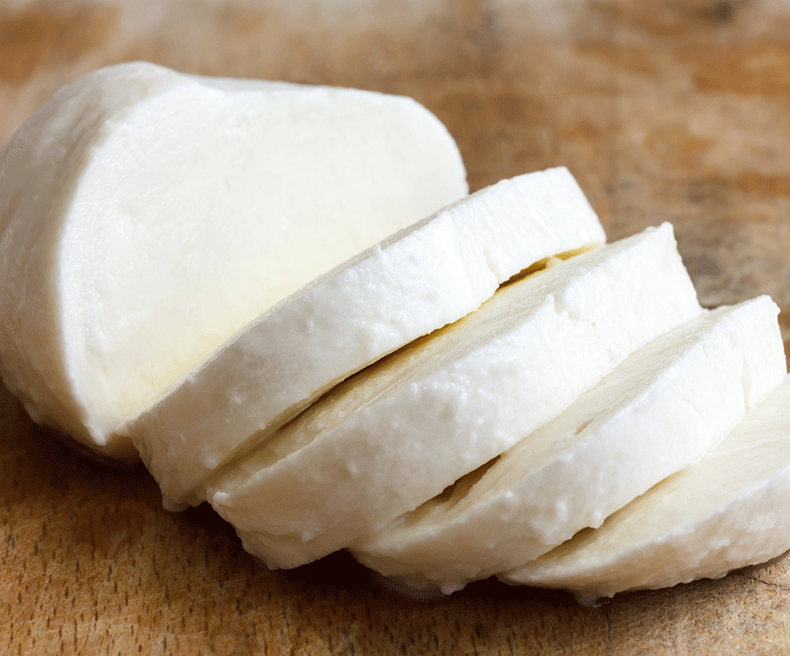
MozzarellaProbably the most famous kind of pasta filata cheese. All the kneading and spinning makes mozzarella stretch more once it’s melted, so it’s an ideal topping for pizza. Mozzarella is soft and moist, and because it has a high water content it’s surprisingly low in fat. Mozzarella has a mild flavour, slightly salty and creamy. To give it a longer shelf life, you may find mozzarella in a container stored in brine.Bocconcini has a similar taste and texture to mozzarella but are small, round balls of young mozzarella cheese usually made from cow’s milk.Find your perfect mozzarella
2. Soft-ripened cheese
What is a soft-ripened cheese?
Soft-ripened cheese matures and hardens from the outside in, so you may find the cheese is a little runnier at the centre than on its surface.
Cheeses that are soft-ripened have a short aging period. A bit longer than fresh cheese and pasta filata but shorter than most semi-soft and blue cheese.
Soft-ripened cheese is sometimes known as ‘bloomy-rind cheese’ because of it signature soft white rind of blooming mould. This mould converts some of the fats in these traditionally creamy cheeses into aromas called ketones that can give soft-ripened cheese flavours of mushroom, a slight earthiness and a hint of ammonia.
Soft-ripened cheese is best served at room temperature.
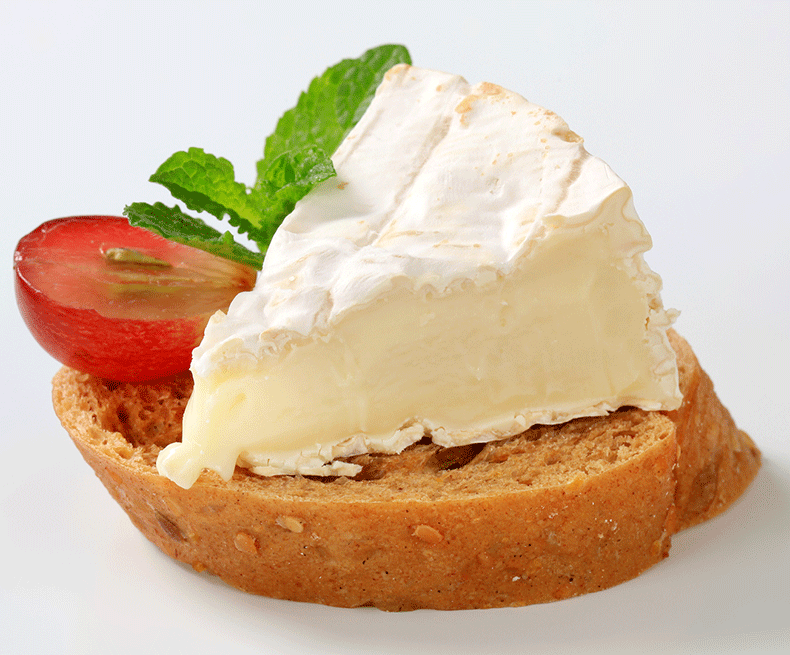
BrieOne of the most popular cheeses in the world, brie originated from the Brie region of Northern France, but we have comfortably put our own Kiwi spin on this delicious cheese.Brie has a slightly chewy white or light yellow rind and a deliciously soft, creamy centre with a mild cheese flavour. Compared to camembert, brie has a slightly higher fat content, a creamier texture and more mild flavours. This is because cheese makers add cream to the brie recipe, as well as smaller amounts of lactic acid producing bacteria.Find brie onlineWhitestone’s Probiotic Brie made in the North Otago town of Oamaru is a classic case of a New Zealand take on a traditional French cheese. Kapiti Aorangi Brie Cheese from Lower Hutt and Gisborne’s Waimata Traditional Brie Cheese are also great examples.

CamembertBrie and camembert may look similar, but there are a few key differences between these soft-ripened cheeses. Because there’s no cream in the recipe, camembert is less creamy than brie. But, because camembert is usually made in smaller batches and with higher amounts of bacteria compared to brie, it ages quicker and has more of those aromatic ketone compounds. The end result is camembert has a stronger flavour and aroma compared to brie, with slightly sour notes.Find camembert cheese onlineFor delicious New Zealand made camembert cheeses, try Galaxy Camembert or Kapiti Kahikatea Camembert. For something a little less traditional, try the Waimata Sheep Milk Camembert.

Double cream camembertDo you like the creamy texture of brie, but the stronger flavours of camembert? You might like a double cream camembert. Just like double cream brie, double cream camembert is made with plenty of added cream to give this cheese a more decadent, creamier texture and mouthfeel.Just look for the Mainland Special Reserve Double Cream Camembert.

Double cream brieLike the name suggests, adding more cream to the traditional brie recipe gives you a richer, creamier, more luxurious brie cheese. Also known as Brie de Portneuf, the added cream gives this cheese extra buttery and slightly nutty flavours.For a decadent treat, try baking double cream brie in the oven for 10 minutes at 150 degrees. The rind holds the cheese together, which spills out in a deliciously, gooey melted treat as soon as you cut into it.Puhoi Valley have won New Zealand awards for their Double Cream Brie, as has Mainland Special Reserve Double Cream Brie.
3. Semi-soft cheese
Semi-soft cheese typically has a slightly less water content than soft-ripened cheeses, so they are a little more firm, plus they have a short to medium aging process.
Because of this, semi-soft cheeses will still have some of the creamy, milky flavours of soft-ripened cheeses. However, instead of being more runny in the middle, semi-soft cheese is usually the same consistency all the way through, with the added aging time developing more of the cheese’s flavour.

Havarti cheese Havarti typically comes in a mild-yellow colour, sometimes speckled with black ‘eyes.’ Havarti has a mild, buttery texture, but sharper flavours compared to brie and camembert. Havarti can also have a slightly tangy, almost salty taste.Because havarti cheese is matured for longer than most soft-ripened cheese, you can find a wide range of flavours. For a creamier havarti, you may like Whitestone Creamy Havarti. From the Canterbury coastal town of Akaroa, Barry’s Bay produce a more classic havarti cheese, while Kapiti Smoked Havarti Cheese is a uniquely kiwi twist.Find havarti cheese online

Provolone cheese This classic Italian cheese can be divided into two groups. Provolone Dolce cheese varieties are typically aged for two to three months, while Provolone Piccante cheeses can be aged for four months or longer, giving them sharper, stronger flavours. Provolone is made using pasta filata techniques, but the longer maturation and harder texture means it can also be classed as a semi-soft cheese. Provolone is commonly used in a lot of American cooking because of its mild, creamy flavours. Unlike other pasta filata varieties, aging provolone means it can be sliced without crumbling but it’s softer texture makes it perfect for melting in cheese toasties or on top of pizza.

Jarlsberg cheeseThis cheese out of Norway is pale yellow, with a yellow wax rind. Jarlsberg is typically mild and buttery, slightly sweet and a bit nutty.Jarlsberg is aged for a minimum of three months, and the more traditional varieties have medium to large sized holes running through the cheese.

Muenster cheeseMuenster is an American version of the traditional French Munster cheese. The extra ‘e’ in Muenster was added to clear up any confusion.Muenster cheese’s classic orange rind is made using annatto, a sweet, nutty seasoning that can also be used to add flavour to other cheeses like Cheddar or Colby.Depending on how long Muenster cheese has been aged, flavours can range from mild and creamy, to more sharp with a pungent aroma.
4. Washed rind cheese
Now here is where cheese gets interesting. If you have ever heard people complaining about cheese that smells like feet or old socks, they were probably talking about washed rind cheese. And yes, those aromas are created on purpose.
During the maturation process, washed rind cheeses are regularly rinsed down with salt water, wine or beer. Originally, people hoped that a salt or alcohol bath would kill off mould growing on the cheese and make it last longer.
While the rinsing did kill off some of the mould, it also helped other strains of mould and bacteria to grow. In particular, the bacteria B. linens which gives these cheeses their signature ‘stinky’ aroma.
It’s often said about washed rind cheese that their bark is worse than their bite. If you can push past the smells, you may be surprised by the flavours you find.
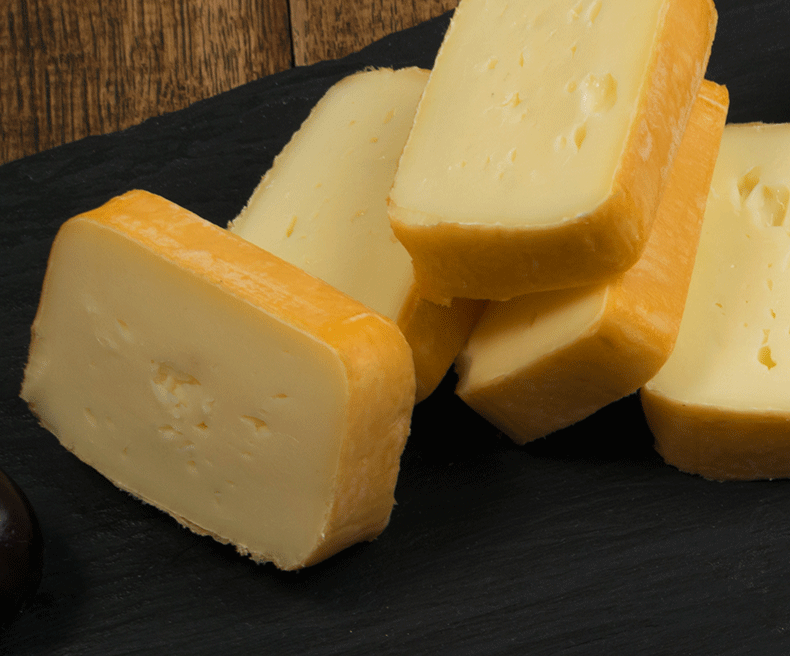
Limburger cheesePossibly the most famous (or infamous) washed rind cheese, Limburger is a semi-soft cheese almost exclusively made in Germany and is one of the world’s stinkiest. The thin, pale, orange-brown rind is the result of the regular washing. Inside, depending on how long it has been aged, young limburger cheese can be crumbly, chalky and soft while older varieties are slightly firmer with a more creamy texture. If you can get past the smell, limburger cheese has a grassy, earthy, mushroomy flavour that’s complemented well with dark rye bread and a Belgian style saison beer.
5. Blue cheese
Ever looked at a blue cheese and wondered how those blue veins got there? Once again, the answer is mould.
Bacteria is added to the outside of soft-ripened cheese so they form a slightly harder rind and mature slowly from the outside in. In comparison, blue cheeses are injected with a different type of bacteria that grows from the inside out.
Compared to semi-soft and soft-ripened cheeses, blue cheese typically has a much stronger aroma as well as saltier, nuttier flavours.

Protected destination of origin
Unless it’s made in the Champagne region of France, similar wines made in New Zealand or elsewhere are simply called ‘sparkling wines.’
Many of the more famous blue cheeses like France’s Roquefort or England’s Stilton can only be produced in specific areas. This is why, when you walk down the dairy aisle of your local New World, most of the blue cheese varieties are simply called ‘blue cheese.’
New Zealand blue cheese
That being said, we make a wide variety of delicious blue cheeses in New Zealand.
Whitestone’s Shenley Station Blue Cheese is named after a mould variety discovered in Fairlie, which gives the cheese subtle mushroom flavours and a sticky texture.
Galaxy Creamy Blue Cheese may be considered an introduction to blue cheese for those wanting to try some for the first time, while the Galaxy Blue Vein Cheese has stronger, saltier, more intense savoury flavours.
Find blue cheese online
What types of cheese can you get in New Zealand?
You can find locally made, New Zealand varieties of all the cheese listed below.
6. Fresh cheese
Also called ‘unripened cheese’ because it isn’t aged at all, fresh cheese are typically soft, spreadable, creamy cheeses with mild flavours.
Because fresh cheeses have a high moisture content, they have a short shelf life. Like their name, they are best eaten fresh, and once open they should be finished in two or three days.
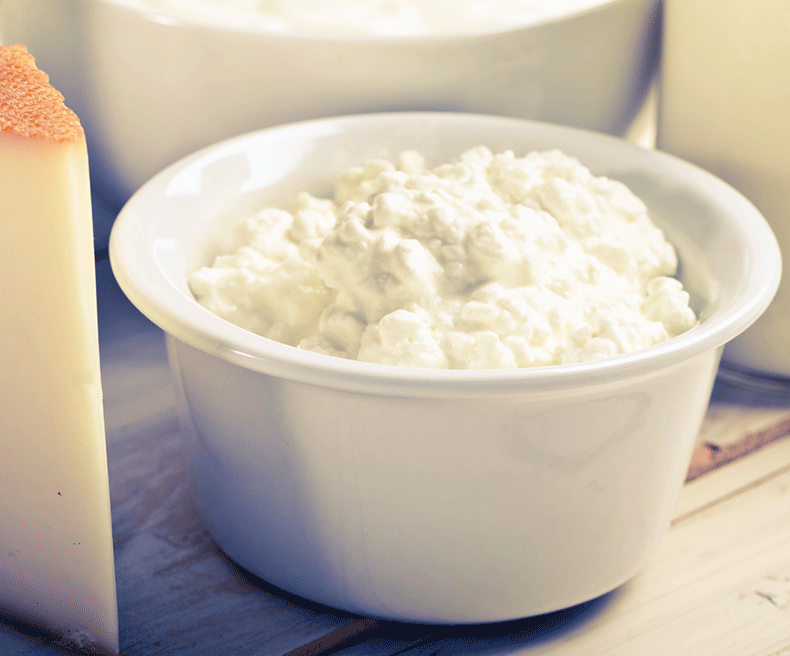
Cottage cheeseCottage cheese is popular with athletes because it’s high in protein and low in calories. The soft texture and mild flavour of cottage cheese means it’s very versatile and is easily incorporated into a number of recipes. You can use cottage cheese as a substitute for sour cream, mix it into pancake batter as a milk replacement, crumble it on top of muesli or granola, or simply spread it on toast. Find cottage cheese online

Cream cheeseVery similar to cottage cheese, cream cheese tends to be slightly more rich in flavour and higher in calories because it’s normally made using cream or full-fat milk. The rich, slightly salty flavour of cream cheese, along with it’s spreadable texture means it’s often used in cake icing to balance out sweeter flavours. Find cream cheese online

MascarponePronounced ma-skuh-pow-nee, mascarpone is also known as ‘Italian cream cheese.’ Mascarpone is like a more decadent version of cream cheese as it’s exclusively made from whole cream, giving it a much richer and creamier flavour and texture. Mascarpone is most commonly used in desserts like cheesecake and tiramisu. Find mascarpone cheese online

RicottaIn Italian, ‘ricotta’ simply means ‘recooked as that’s how this cheese is made. While most cheese is made using the solid curds, ricotta is usually made using the liquid whey and the little bit of curds left behind. That whey and leftover curd is then heated with a little milk and citrus, which is the recooking part, and after it’s all strained you’re left with fluffy white ricotta. Ricotta has a thick texture and mild, creamy, slightly salty taste which makes it well suited for savoury or sweet dishes. You can use ricotta as a yoghurt substitute or sprinkle some over pasta dishes! Perfect Italiano Ricotta is made right here in New Zealand.Find ricotta cheese online
7. Semi-hard cheese
More types of cheese than any other fall into the semi-hard category. Semi hard cheese gets its flavour from the bacteria used to create it, and how long it is aged for.
When the bacteria is added to the milk, it goes to work converting the natural sugars or lactose in the milk into lactic acid, which is what give the cheese some of its flavour. Different types of bacteria, and longer fermentation times for the bacteria to gobble away at the lactose will add stronger flavours.
Likewise, the more a cheese is aged, the more it dries out, making the flavours already in the cheese stronger and more robust

Cheddar cheeseMore cheddar cheese is eaten around the world than any other. Easy to slice, a mild, creamy flavour and perfect for melting. Cheddar cheese is versatile. If you’re putting together a cheese board, why not try Barrys Bay Cold Smoked Appletree Cheddar Cheese, Kapiti Port Wine Cheddar Cheese, or Mainland Aged Cheddar Epicure Cheese for a different twist on a familiar taste?Find cheddar cheese online

Edam cheeseEdam cheese originated in the Netherlands, and became popular because it aged and travelled well. If you like cheese but eat it sparingly and want a block that will last in your fridge, try Mainland Edam Cheese.Find edam cheese online
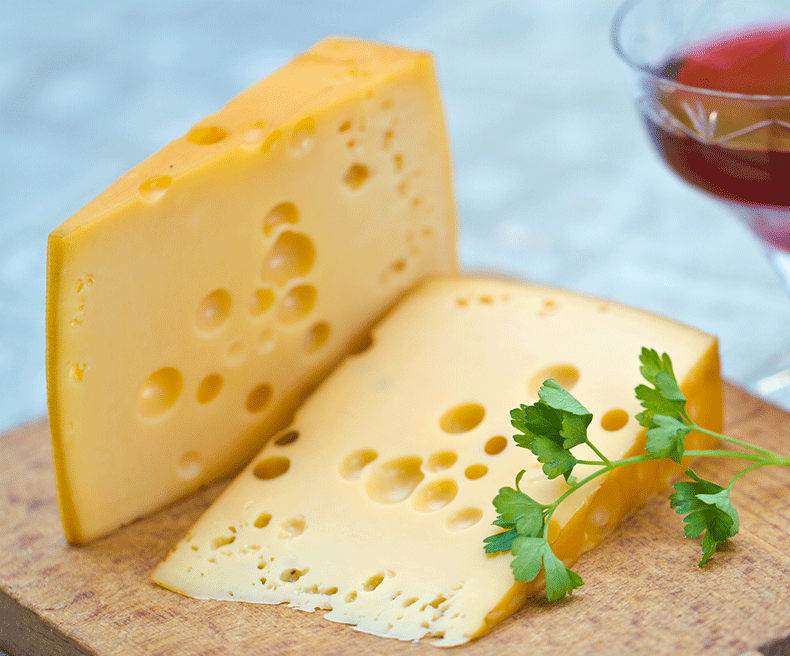
Emmental cheeseEmmental is probably the cheese you imagine when you picture ‘Swiss Cheese.’ Traditionally made in Switzerland, emmental is the pale yellow cheese with a hard rind that’s full of walnut sized holes. Considered one of the more complicated cheeses to make, emmental has a sweet aroma, with fruity flavours and a touch of acidity. These characteristics make emmental a delicious pairing with a robust red wine.

Gouda cheesePossibly one of the most popular cheeses to come out of the Netherlands, gouda, (pronounced ‘how-da’) is a rich, robust semi-hard cheese.The flavours within gouda cheese become stronger the longer it is aged. Younger goudas are milder and more creamy and pair well with beer, while more mature gouda develop fruitier, acidic flavours that complement a robust red wine. For a New Zealand made gouda that stays close to the original Dutch recipe, try Karikaas Young Gouda that’s matured for a couple of months, Karikaas Mature Gouda that’s aged for a few months more, or step it up a notch with Karikaas Vintage Gouda that’s matured for a year and a half. Enjoy gouda and want to shake it up a bit? Made in Hamilton, Meyer’s Goats Milk Gouda or their Smoked Gouda Cheese varieties will do just that. Alternatively, Kapiti Cumin Seed Gouda adds a unique flavour to this sweet and fruity cheese. Find gouda cheese online
Matching wine and cheese
There’s a reason wine and cheese nights are a classic. The fruitier characteristics of some cheeses make them ideal for pairing with wine. In fact, because a lot of cheese was created in traditional wine making countries like France, Italy and Germany, matching wine and cheese has probably been happening for as long as they have been around.
Have a look at this guide for matching wine and cheese to create the perfect wine and cheese evening.

Creating a cheese board
Want a pre-dinner snack, an after dinner treat, or an indulgent treat for any occasion, you can’t go wrong with a cheese platter.
Check out our top five tips for creating the perfect cheeseboard.






